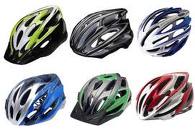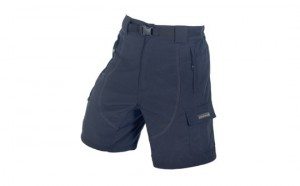Riding a bike is healthy, environmentally friendly and great for all ages and fitness levels. From toddlers through to pensioners, there’s a cycling discipline to suit everyone’s tastes. So, in my humble opinion, it’s no wonder more and more people are jumping on their bikes. There also seems to be a growing trend for bike geekery chat. I was working in the Daily Record office at the weekend and I enjoyed at least five chats with different people about bikes, kit and cycling tours.
 But if you haven’t sat on a saddle for number of years, the much-revolutionised world of bikes and kit could easily befuddle you. Questions I’ve been asked recently include:
But if you haven’t sat on a saddle for number of years, the much-revolutionised world of bikes and kit could easily befuddle you. Questions I’ve been asked recently include:
What is a base layer and do I really need one? Answer: A base layer is a thin short or long sleeved top that is usually made of sweat-wicking and breathable material. Layering these thin tops, rather than putting on just one thick top, is a great way to keep your body at the right temperature. Baselayers are not essential for cycling but they do help you to manage your sweating and body temperature.
Should I buy a hybrid or a racer? A: See the difference between racers, hybrids and mountain bikes.
Won’t I look stupid in a helmet? A: Most probably, although some people do suit a helmet. Whether you wear one or not is up to you. I’ve written blogs about the merits of bike helmets before. Personally, I prefer to wear one and hopefully keep my brain inside my skull, and at least avoid some scratches and bruises, if I happen to fall off or be knocked off my bike.
Where can I buy a waterproof jacket to fit over my ample bosom? A: Most bike clothing companies now sell a fantastic range of female-specific cycle clothing in a range of sizes. Check out Altura, Endura and Gore.
The essential kit for cycling… and some non-essential, but quite lovely, ideas.
 Helmet: It is not a legal requirement to wear a helmet in Scotland but I think it’s worth it. See above. Others don’t, so it’s up to you. A basic helmet will cost around £15. There are helmets to suit mountain biking and road cycling but both with serve the same purpose. Always check that it has the kite safety mark. In general the more you pay for a helmet the less you get! That is, pricier helmets have more holes for better ventilation and aerodynamics. My personal choice is a Giro Prolight …
Helmet: It is not a legal requirement to wear a helmet in Scotland but I think it’s worth it. See above. Others don’t, so it’s up to you. A basic helmet will cost around £15. There are helmets to suit mountain biking and road cycling but both with serve the same purpose. Always check that it has the kite safety mark. In general the more you pay for a helmet the less you get! That is, pricier helmets have more holes for better ventilation and aerodynamics. My personal choice is a Giro Prolight …
Waterproof jacket: Fickle Scottish weather means that a cycling jacket is pretty much essential. When not in use you can roll it up and pop it in your rucksack or bike bag. It’s worth spending a bit more to buy a jacket that is made from a good quality fabric that is both waterproof and breathable. Prices start from around £40. I usually advise that you buy a jacket specific to your gender as they are made to fit. Remember that a cycling jacket will have longer arms and back than normal to accommodate your position on the bike.
Padded shorts: Many beginner cyclists shy away from all things Lycra and padded. I don’t blame them! However, padded shorts do make a huge difference if you plan to do longer bike rides. Always buy shorts specific to gender because the padding is adapted to suit our different undercarriages! If Lycra is a step too far for you, choose baggier style mountain biking shorts with a padded knickers lining. Many women are now choosing Lycra shorts with a skirt overlay.
 Three-quarters: As summer fades, many cyclist opt for longer length cycling leggings. These come in three quarter length and full-length. For even greater warmth (and some say, comfort) choose leggings with a bib. The bib keeps your torso warm and these garments also have shoulder straps to keep the Lycra thingies up.
Three-quarters: As summer fades, many cyclist opt for longer length cycling leggings. These come in three quarter length and full-length. For even greater warmth (and some say, comfort) choose leggings with a bib. The bib keeps your torso warm and these garments also have shoulder straps to keep the Lycra thingies up.
Comfy bike seats: You can now buy gel seats for extra comfort. Some people swear by these. They are not my preference but if Lycra is totally not for you a gel seat could be the answer.
Gloves: Short fingered in summer and long fingered in winter, gloves keep your hands warm and dry and prevent chaffing if you sweat. They come in all kinds of styles, from lightweight summer through to padded for winter and for mountain biking and road cycling.
Socks: There are socks for cycling, but really they are not necessary. Wear the socks that feel the most comfortable and keep you feet warm if you’re out in the cold.
Shoes: Wear trainers or similar if you’re using straightforward pedals or toe-clips that you slide your toes into. If you want a better cycling performance, bike shoes with cleats are the best solution. Cleats are the gadgets that “click” into special pedals. As well as the downward push while cycling, you’ll benefit from the upward thrust. My advice is to familiarise yourself with simply riding a bike in the first place. Then build up to using the cleats, and always try them somewhere that you do not mind falling off. I once keeled over in the middle of a busy shopping street and people kept telling me they’d spotted me for years afterwards!
Recommended accessories:
Check out Radial Cycles for a good range of bike accessories.
* A good bike lock: Check that the one you buy is insurance company approved, if you want to ensure a payment due to theft. A D-lock is the most theft-proof but also the heaviest to carry. Other locks come in a wide range of wire and chain thicknesses and weights.
 * A puncture repair kit, tyre levers (for getting the tyre off the wheel), spare inner tube and a pump. You’ll need to know how to use these. It’s not difficult, so ask a cycling friend to talk you through it.
* A puncture repair kit, tyre levers (for getting the tyre off the wheel), spare inner tube and a pump. You’ll need to know how to use these. It’s not difficult, so ask a cycling friend to talk you through it.
* Track pump: This is a pump that you keep at home (it’s too big to carry on your bike) and allows you to add the exact amount of pressure into your tyres.
* Water bottle and bottle cage: Fitting a bottle cage to your bike allows you to carry bottles and fluids on days when the sun comes out!
* Reflective arm or leg bands, and fluorescent clothing are a great for improved safety on roads.
* Bike lights: If you plan to be out late, or during the winter, then make sure you invest in front and back bike lights so you can be seen on your bikes.
 * Panniers and bike bags: You’ll need a bike with a pannier rack on which to affix your panniers. These are a great idea if you plan to commute to work or use your bike for shopping. Alternatives include a rucksack or a front shopping basket. Another useful item is a saddle bag in which you can stow your spare inner tube, tyre levers and a repair kit, as well as your mobile phone.
* Panniers and bike bags: You’ll need a bike with a pannier rack on which to affix your panniers. These are a great idea if you plan to commute to work or use your bike for shopping. Alternatives include a rucksack or a front shopping basket. Another useful item is a saddle bag in which you can stow your spare inner tube, tyre levers and a repair kit, as well as your mobile phone.
* Snazzy gadgetry: A GPS gadget is a great way to keep track of your speed, distance, ascent and route taken. It’s not necessary, of course, but it does allow you the opportunity to compare your bike rides, see improvements in your fitness and share your routes with other cyclists on-line.
Once you get into cycling you’ll find yourself surprisingly keen to buy ever more kit and accessories. remember, though, that you don;t really need a great deal to make your first outings on a bicycle…
Next blog: Bike brands and styles to check out





